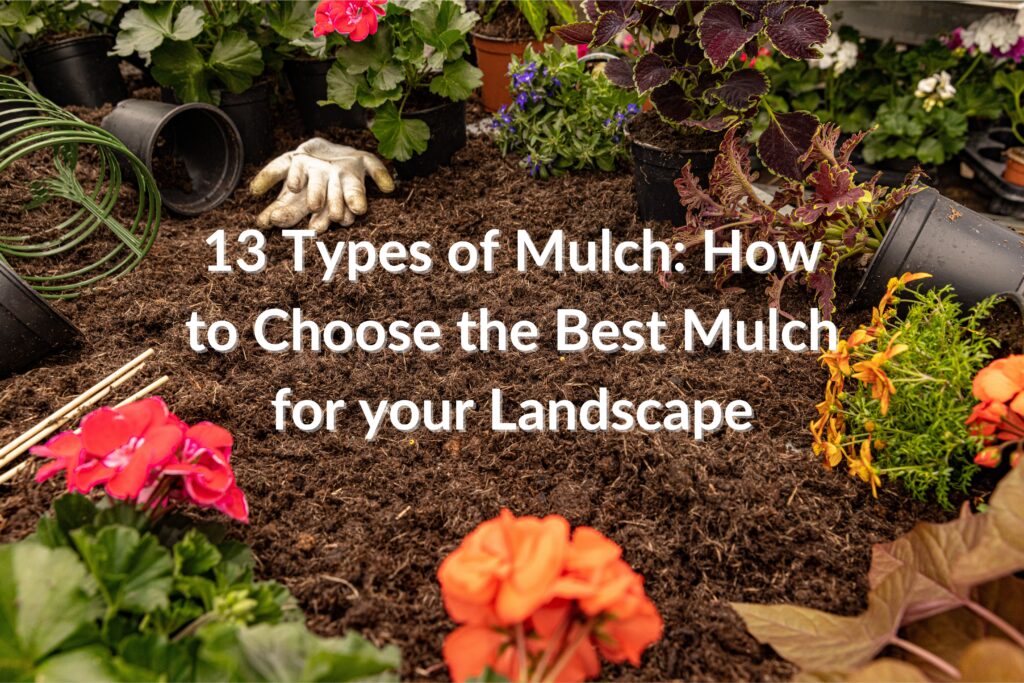Table of Contents
Mulching is a crucial practice in gardening and landscaping, providing numerous benefits such as moisture retention, weed suppression, and soil temperature regulation. With a variety of mulch types available, each offering unique advantages, it can be challenging to choose the right one for your landscape. This guide explores 13 types of mulch, detailing their properties, benefits, and ideal uses, helping you make an informed decision for your garden’s needs.
What Is Mulch?
Mulch is any material spread over the surface of the soil to cover and protect it. It can be organic, such as wood chips and straw, or inorganic, like plastic or gravel. Mulch serves multiple purposes, including improving soil health, reducing water evaporation, and enhancing the visual appeal of garden beds.
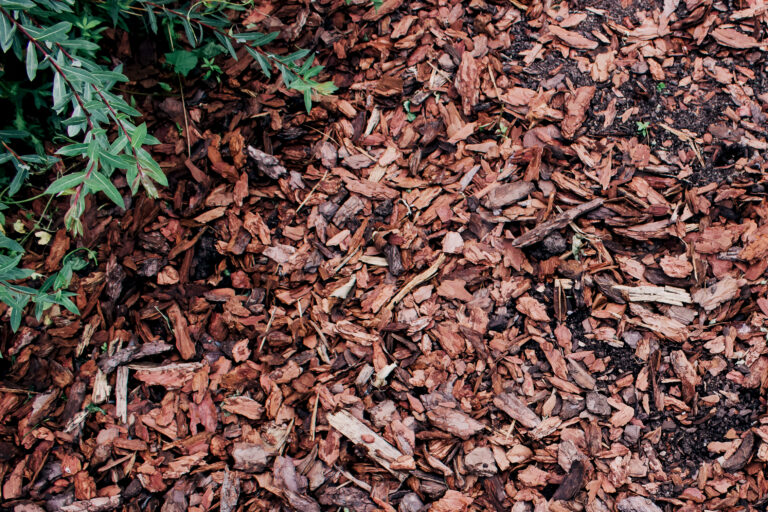
How Mulch Benefits Your Garden
Mulch offers a range of benefits that contribute to a healthier, more vibrant garden:
- Moisture Retention: Mulch helps soil retain moisture by reducing evaporation, ensuring plants have a consistent water supply.
- Weed Suppression: A thick layer of mulch blocks sunlight, inhibiting weed growth and reducing competition for nutrients.
- Temperature Regulation: Mulch insulates the soil, keeping it cooler in summer and warmer in winter, which helps plants thrive.
- Erosion Control: Mulch prevents soil erosion by protecting the soil from heavy rain and wind.
- Nutrient Addition: Organic mulches decompose over time, adding valuable nutrients to the soil and improving its structure.
- Aesthetic Appeal: Mulch provides a finished, tidy look to garden beds and landscapes.
What Is Mulch Made Of?
Mulch can be made from a variety of materials, each with distinct characteristics and benefits: If you’d like to explore more about organic vs inorganic mulch, read our blog Organic vs Inorganic Mulch: What’s the Difference and Why it Matters.
Organic Mulch: Includes materials like bark, wood chips, straw, grass clippings, leaf mulch, compost, and pine needles. These mulches decompose over time, enriching the soil with organic matter.
Inorganic Mulch: Comprises materials such as plastic, landscape fabric, rubber mulch, and gravel. These mulches do not decompose and are often used for long-term weed control and decorative purposes.
13 Types of Mulch
1) Bark Mulch
Bark mulch, made from the bark of trees like pine, cedar, and cypress, is a popular organic option. It decomposes slowly, providing long-lasting soil benefits. Bark mulch is excellent for suppressing weeds and adding a natural look to garden beds.
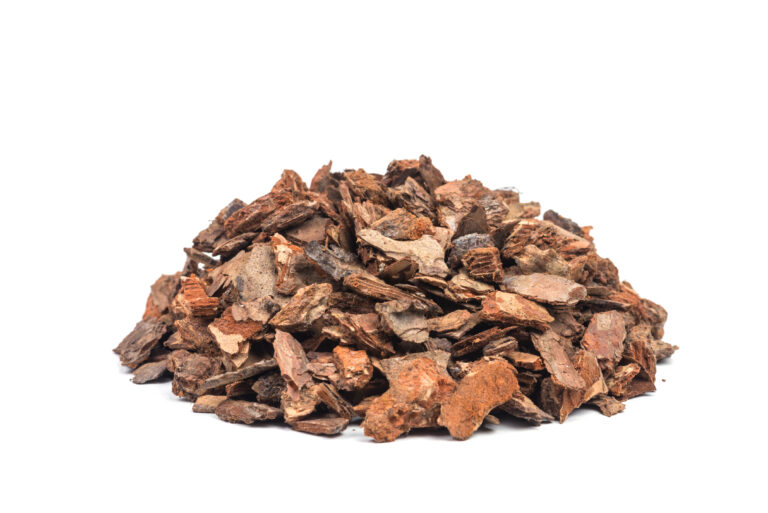
2) Wood Chips
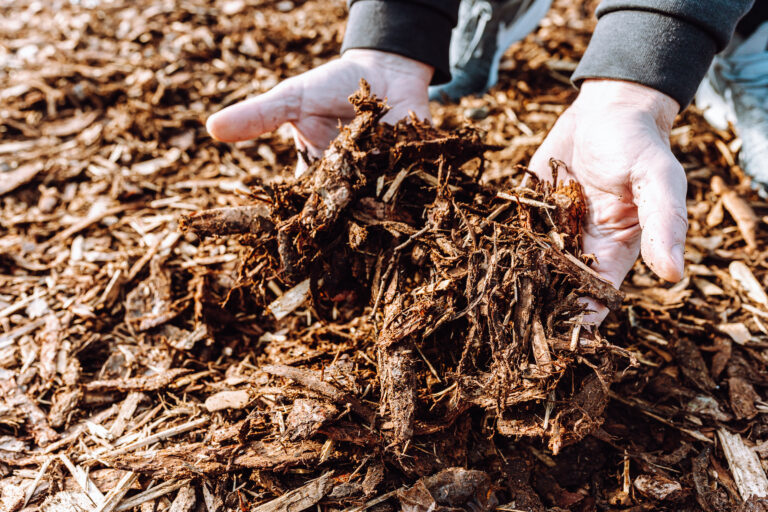
Wood chips, often derived from tree trimming and pruning, are another common organic mulch. They decompose faster than bark mulch, enriching the soil with nutrients. Wood chips are ideal for pathways, playgrounds, and as a base for shrubs and trees.
3) Straw
Straw mulch, typically made from wheat, barley, or oat straw, is lightweight and easy to spread. It helps retain soil moisture, suppress weeds, and prevent soil erosion. Straw is especially beneficial for vegetable gardens and newly seeded lawns.
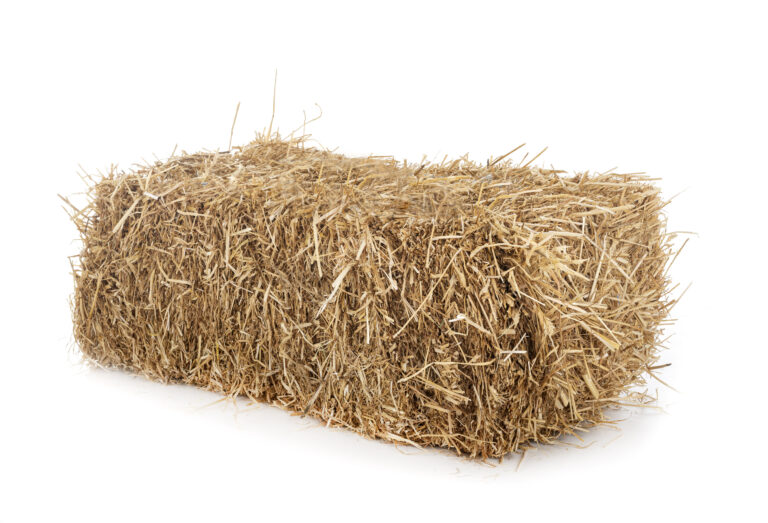
4) Grass Clippings
Grass clippings are an eco-friendly mulch option that recycles lawn waste. They decompose quickly, adding nitrogen to the soil. Grass clippings are best used in thin layers to avoid matting, which can inhibit water and air penetration.
5) Leaf Mulch
Leaf mulch, composed of shredded or composted leaves, is readily available and cost-effective. It enriches the soil with organic matter and nutrients as it decomposes. Leaf mulch is suitable for flower beds, vegetable gardens, and around trees and shrubs.
6) Compost
Compost is a nutrient-rich mulch made from decomposed organic materials like kitchen scraps and yard waste. It improves soil structure, fertility, and moisture retention. Compost is versatile and can be used in vegetable gardens, flower beds, and around trees and shrubs.
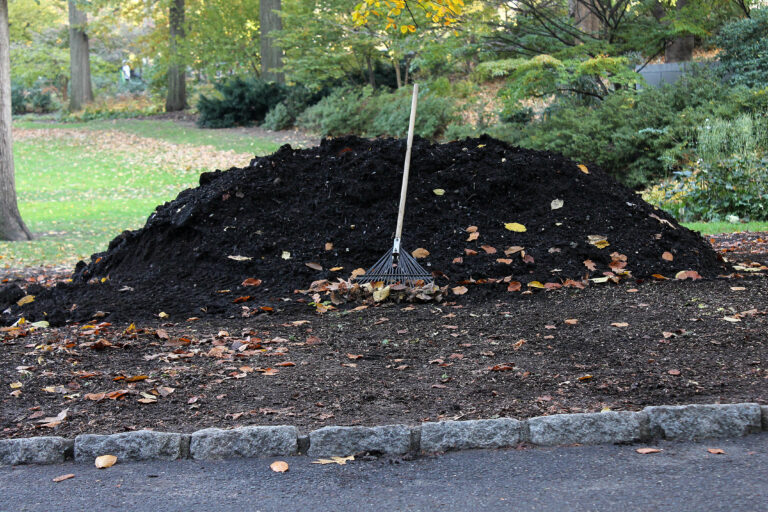
7) Pine Needles
Pine needles, also known as pine straw, create an airy, acidic mulch that is ideal for acid-loving plants like azaleas and rhododendrons. They decompose slowly and provide excellent erosion control. Pine needles are best used in garden beds and around trees and shrubs.
8) Newspaper
Newspaper mulch is an inexpensive, biodegradable option that helps suppress weeds and retain soil moisture. It should be layered and then covered with another type of mulch, like straw or wood chips, to prevent it from blowing away. Newspaper mulch is suitable for vegetable gardens and flower beds.
9) Cardboard
Cardboard mulch, similar to newspaper mulch, is effective for weed suppression and moisture retention. It should be layered and covered with organic mulch to enhance its appearance and functionality. Cardboard mulch is ideal for vegetable gardens and pathways.
10) Plastic Mulch
Plastic mulch is a synthetic option that helps retain soil moisture, warm the soil, and suppress weeds. It is commonly used in commercial agriculture for crops like tomatoes and strawberries. Plastic mulch is best for annual vegetable gardens but requires removal and disposal after the growing season.
11) Landscape Fabric
Landscape fabric is a durable, permeable synthetic mulch that allows water and air to reach the soil while preventing weed growth. It is often used under decorative mulch in garden beds and around trees and shrubs. Landscape fabric provides long-term weed control but needs occasional maintenance. If you’d like to explore more about weed control, read our blog Laying Weed Barrier Underneath Mulch: Pros and Cons
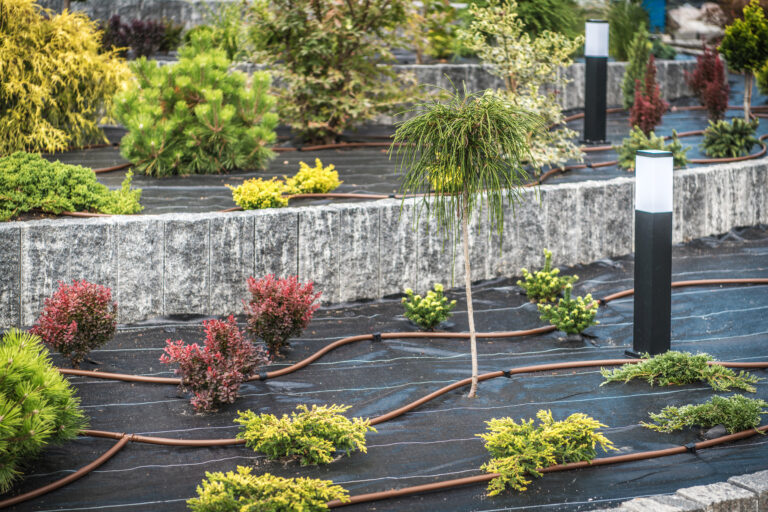
12) Rubber Mulch
Rubber mulch, made from recycled tires, is a long-lasting synthetic option that does not decompose. It provides excellent weed suppression and soil moisture retention. Rubber mulch is ideal for playgrounds, pathways, and as a base for trees and shrubs but is not recommended for vegetable gardens.
13) Gravel and Stone
Gravel and stone mulches are inorganic options that provide a clean, modern look to landscapes. They do not decompose or need replacement and are excellent for drainage and weed suppression. Gravel and stone are best used in pathways, rock gardens, and around trees and shrubs. If you’d like to explore more about replacing rock with mulch, read our blog 3 Reasons to Remove Rock and Install Mulch.
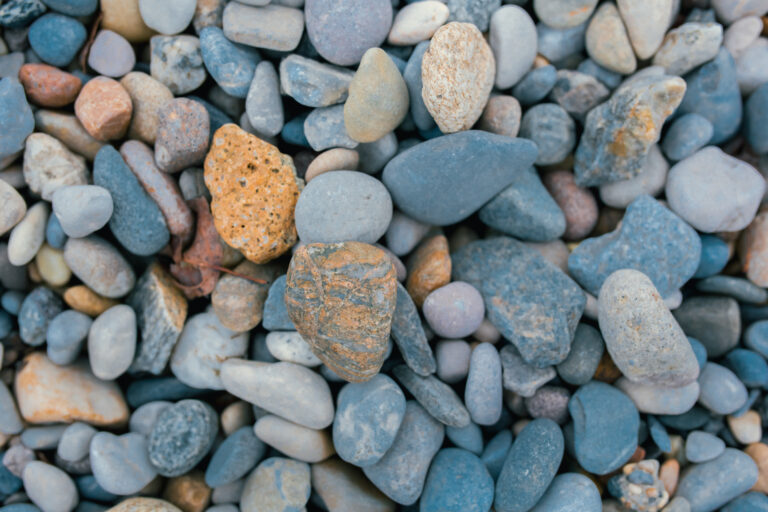
How to Apply Mulch
Applying mulch correctly is essential to maximize its benefits: If you’d like to explore more about mulch installation, read our blog 7 Tips for Successful Mulch Installation
- Prepare the Area: Remove any weeds and debris from the area you plan to mulch. If necessary, edge the beds to create a defined border.
- Choose the Right Mulch: Select a mulch that suits your garden’s needs and aesthetic preferences.
- Layer the Mulch: Spread the mulch evenly over the soil, typically to a depth of 2-4 inches. Thicker layers may be required for coarser materials like wood chips.
- Avoid the Base of Plants: Keep mulch a few inches away from the base of plants and tree trunks to prevent rot and pest infestation.
- Maintain the Mulch: Replenish mulch as needed to maintain the desired depth, especially after heavy rains or strong winds.
When to Apply Mulch
The best time to apply mulch depends on your gardening goals and climate:
- Spring: Applying mulch in early spring helps retain soil moisture and suppress weeds as the growing season begins.
- Fall: Mulching in the fall protects plants from winter cold and reduces soil erosion during rainy seasons.
- Throughout the Year: In warmer climates, mulching can be done year-round to continuously protect and nourish the soil.
Conclusion
Choosing the right mulch for your landscape involves considering factors like soil type, climate, plant needs, and aesthetic preferences. Each type of mulch offers distinct benefits and can enhance your garden’s health and appearance. By understanding the properties and uses of these 13 mulch types, you can make an informed decision that best suits your landscaping goals, ensuring a thriving and beautiful garden. For more detailed information and tailored advice, visit our page on mulching. For support on your next mulch project, please feel free to reach out through our contact form, and our team will be happy to help.



